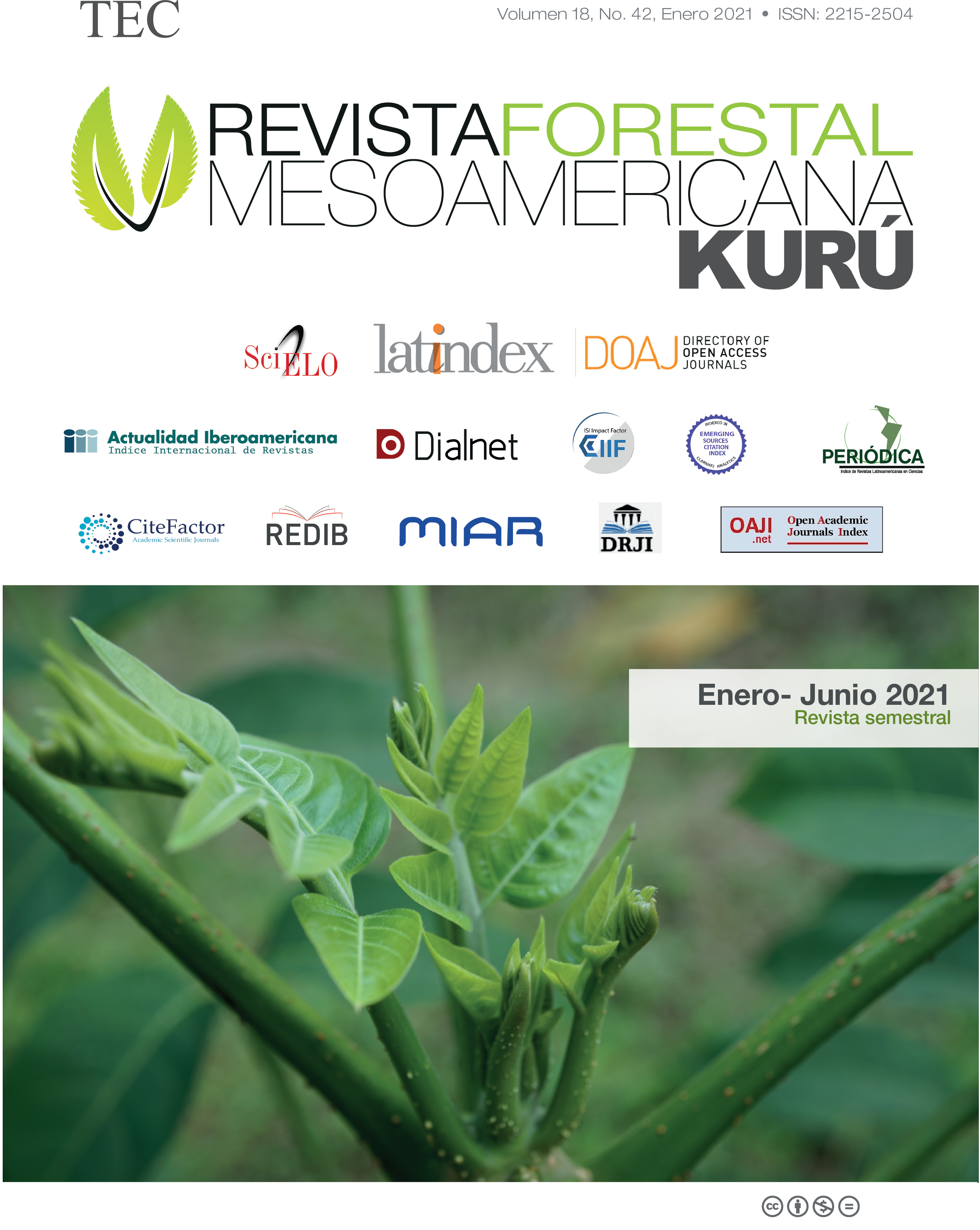Carbon capture potential in mixed plantations with Araucaria hunsteinii K. Schum. in the Atlantic Zone, Costa Rica
Main Article Content
Abstract
Globally, it has become transcendental to seek and innovate the best forest plantation designs to capture carbon (CO2) and mitigate the current accelerated climate change. Due to this, the development of three mixed 18 years old forest plantation designs with Araucaria hunsteinii and other species in order to capture CO2 was studied, located in the Atlantic Zone of Costa Rica. For this, the data in a network of permanent sampling plots carried out by the organization Reforest The Tropics were analyzed, in which dasometric variables have been measured annually. Through the Tukey test, it was determined that there were significant differences in the total volume and accumulated CO2 per hectare between the treatments studied, in which the Vochysia guatemalensis model was the most outstanding with 611.05 m3*ha-1 of total volume and 582.42 Mg*ha-1 of CO2 fixed. However, for the remaining two treatments the CO2 accumulation results were higher than 400 Mg*ha-1. On the other hand, A. hunsteinii presented an optimal development in the mixed plantation designs studied, with growth rates comparable to that found in other latitudes. However, it was shown to be sensitive to competition for light and other resources when combined with other higher-growing species. Finally, it was concluded that the models in this study generate sustainability between the accumulation of CO2 and income generation from the wood sale.
Article Details

This work is licensed under a Creative Commons Attribution-NonCommercial-NoDerivatives 4.0 International License.
Revista Forestal Mesoamericana Kurú is licensed under CC BY-NC-ND 4.0
Al enviar un artículo a la Revista Forestal Mesoamericana kurú (RFMK), los autores ceden los derechos patrimoniales a la editorial de la RFMK una vez su manuscrito haya sido aprobado para publicación, autorizando a la RFMK a editarlo, reproducirlo, distribuirlo, y publicarlo en formato físico y/o electrónico. La titularidad de los derechos morales sobre los trabajos objeto de esta cesión seguirá perteneciendo a los autores.

